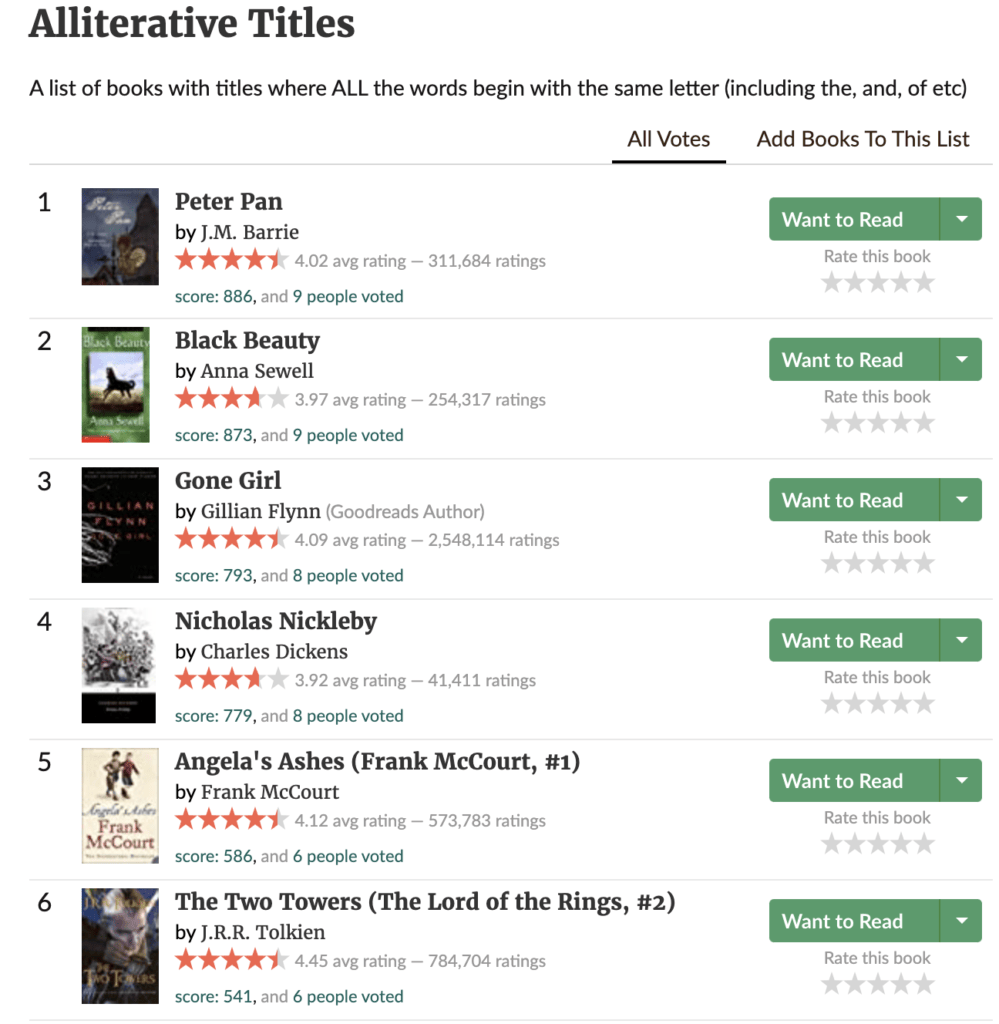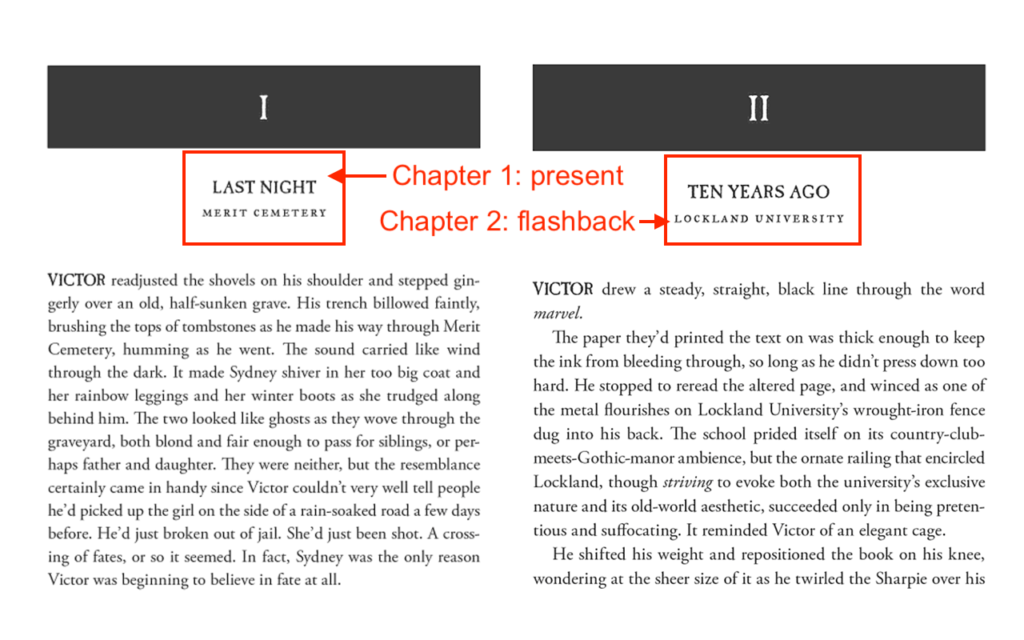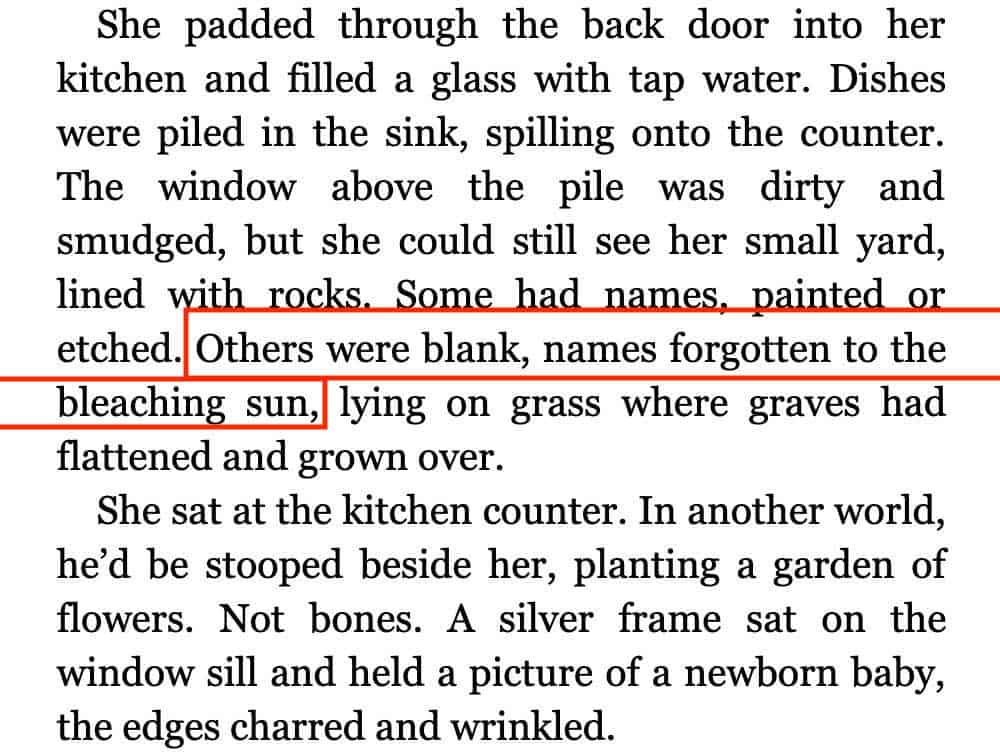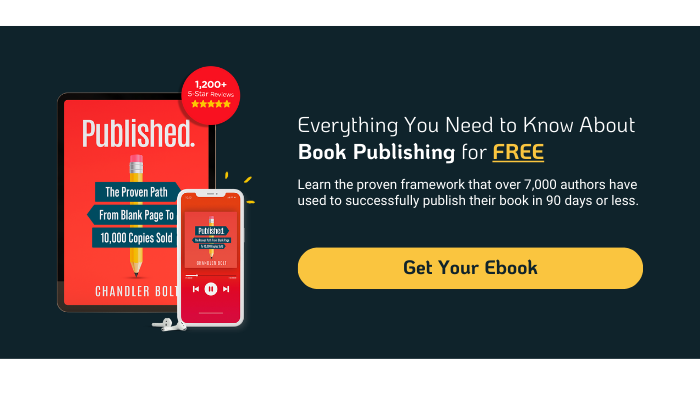Examples of Foreshadowing in Inside Out and Back Again
All writing is made up of literary devices.
Literary devices, like the good 'ole flashback, intentionally uplevel your writing, arrive improve, more than impactful, and craft your writing to hook readers from the introduction.
Literary devices are used to:
- guide your readers in a specific direction to interpret your words the manner y'all want them to
- add colour to your words to get more readers hooked from line 1
- help you sell more of your self-published books (if you want to get serious about it).
Although the term "literary devices" can be a wee fleck intimidating, they're actually pretty simple.
In fact, you're probable using a ton of these elements while writing your book and you don't even realize it…(hint: your favorite Tv set shows use these all the time).
15 Literary devices to make your writing stronger:
- Allusion
- Wording
- Alliteration
- Allegory
- Colloquialism
- Euphemism
- Flashbacks
- Foreshadowing
- Imagery
- Juxtaposition
- Metaphor/simile
- Personification
- Onomatopoeia
- Symbolism
- Tone
What are literary devices?
Literary devices are diverse techniques used in writing to help you express yourself and your ideas in a slightly more creative style, making your writing and world stand out on-folio.
Literary devices tin be used to aid y'all tell a story, go on your readers curious (so that they keep reading), and amp upwardly the tension in your story or book. Ultimately, when used well, they can brand your writing much stronger.
Authors use literary devices, like imagery, to help convey their intended perception of the writing for the reader.
You probably call back learning about literary devices like personification, foreshadowing, and metaphors in school.
While these are very common types of literary elements, there are many more you tin utilise to brand your writing stand out in comparison to others.
Using these devices volition assist your writing become stronger and amend.
List of fifteen Literary Devices Famous Authors Use Most
When it comes to writing, y'all always want to be learning more.
Why? Because the more you know, the better your writing will exist.
There'south no demand to employ every single literary term in your volume, but past knowing what'due south available for yous to use and how to use it strategically, your writing will go stronger and therefore, more captivating to readers.
Here is a list of fifteen literary devices used by famous and successful authors who know smashing writing.
#1 – Allusion
No, this is not an illusion, though the ii can exist confused with one another.
An allusion is a literary device that references a person, place, thing, or event in the real world. You lot can use this to paint a clear picture or to even connect with your readers.
Allusions are often used as literary elements that help connect the reader to the works. By referencing something the reader may be familiar with within the real world, this invests them more than if y'all didn't have any connections.
Innuendo Examples:
"Careful, now. You don't desire to go opening Pandora's Box."
In this example, the allusion is Pandora's Box. Because this is a reference to a real-life chemical element, it's considered an allusion.
"He was a existent goodguy brawl-buster, the Deadpool of his time."In this example, the narrator is using Deadpool every bit the innuendo by referencing the person they're describing as being like the super-hero (if you tin telephone call him that) Deadpool.
#two – Diction
Wording is a literary device that'due south the pick of words or style used by the writer in order to convey their bulletin.
Basically, that's a fancy way of maxim that diction is the fashion in which the author wants to write to a specific audience.
Here are the dissimilar types of diction and what they hateful:
- Formal wording – This is when the discussion choice is more than formal or high class. Often, writers use formal wording equally a literary device when more educated individuals are speaking or the content is for those with higher pedagogy.
- Informal diction – When your characters (or y'all writing a nonfiction) are speaking directly to everyday people, this type of diction would exist use as it's more conversational.
- Slang diction – Slang is commonly used for a younger audience and includes newly coined words or phrases. An example of this would be apply of the give-and-take, "fleek" or other new slang phrases.
- Vernacular diction – This is when words that are used in everyday life are written. These may be different depending on the civilisation or religions nowadays in the writing.
Diction Example:
"I bid you goodbye."
The wording present hither is formal wording, as about people don't use "bid" and "adieu" regularly in everyday speach.
"I remember her hair in particular, because information technology was on fleek!"
Here, "fleek" is a slang term used to describe a woman's hair, which means it's slang diction.
#3 – Alliteration
Ingemination is a literary device that uses the same letters or sounds at the beginning of words in a judgement or title.
There are many nursery rhymes that utilise alliteration merely this is also useful for creating something memorable inside your writing.
Yous can too use alliteration when choosing the title of your book, equally it makes it easier to call back, as yous can meet in the example of alliterative titles below.
Alliteration Examples

#4 – Allegory
An apologue is a effigy of speech where abstract ideas are described using characters, events, or other elements.
That's more than of a fancy style of maxim that instead of being literal with an thought, you use characters, events, or other elements in social club to depict it in a way the reader can better sympathise.
Think of it as a story within a story. Y'all utilize characters, events, or other means to represent the literal meaning.
This one is a petty better understood with examples than a definition.
Allegory Examples:
One of the most famous works using allegory is George Orwell'south Animal Subcontract. The perceived story is about a group of farm animals who rise upward and defeat humans, but the underlying story is about the Russian Revoluation.
Using an allegory is ofttimes telling a darker story in a way that's easier to sympathise and for readers to receive.
#five – Colloquialism
I style to increase the globe-building in your book is to use colloquialisms.
Colloquialisms are expressions, words, and phrases that are used in informal, everyday spoken communication, including slang.
You can use these in a couple of different ways. Firstly, you can employ these as slang in the real globe, and secondly, you tin can even create your book'south own colloquialisms for their world and culture, and fifty-fifty when writing dialogue.
Colloquialism Examples
- Bamboozle – to deceieve
- Gonna – going to
- Exist blue – to exist sad
- Bugger off – go away
- Over yonder – over at that place
- Da flop – the all-time
You tin can create your own coloquialisms within your own earth to increment the realism.
#6 – Euphemism
We tend to think of euphemisms every bit sexual euphemisms, which is how they're often used. However, euphemisms are actually any terms that refer to something boorish or unpleasant.
We create phrases or other words in order to avoid using the bodily term considering they're boorish, rude, or indecent. Those alternatives are considered euphemisms.
This is ofttimes why we think of sexual euphemisms when we hear of this literary device. Most individuals would rather make a much lighter comment when referring to something equally "indecent" as sex, merely the same case is fabricated for when someone dies.
Euphemism Examples
- Before I go – before I die
- Do the dingy – have sex
- Rear-end – butt
- perspiration – sweating
- Thin on summit – bald
- Tipsy – drunk
- Having a loose screw – being dumb
#seven – Flashbacks
Flashbacks in literature are when the narrator goes back in time for a specific scene or chapter in order to give more context for the story.
Oftentimes, we see flashbacks in books where the past greatly impacts the present or every bit a way to start a story off on an interesting note. This is seen in Harry Potter whenever Harry gets to meet a memory of the past from Dumbledore or even Snape.
Flashbacks Case
For example, in Roughshod by 5.E. Schwab, she uses flashbacks as a recurring chemical element in her book. Every other chapter goes back in fourth dimension and and then back to the present for the next chapter as a way to structure the story itself.
So in this instance, Schwab is using this literary device to shape the entire narrative of her story instead of only using information technology as a single piece, which is a unique take on flashbacks.

#8 – Foreshadowing
Foreshadowing is when the writer places elements within the writing that gives clues about what volition happen in the future of the story.
These can often be minor $.25 and pieces that some readers might non option up on the first read-through. They might even await back and realize that certain elements were foreshadowing once they hit the climax or a big plot twist was revealed.
Foreshadowing can be both literal and thematic.
You can write a scene where at that place'southward a conversation that the reader tin can't fully understand the significant of until more is revealed.
You can likewise write a scene that has symbolic elements that foreshadow events, like placing a blackness crow in a scene that foreshadows a death, as crows are symbolic of this.
If you really desire to up your artistic writing, you tin can even create themes to foreshadow within your own world.
As an example of this literary device, you tin can create a culture in which rabbits are a "known" sign of change and conspicuously identify a rabbit in a afterwards scene.
Foreshadowing Examples
In Back to the Future , one of the clocks in the opening credits has actor Harold Lloyd from the silem movie Safety Showtime hanging from the minute manus. This foreshadows Doc Brownish hanging from the Hill Valley clock tower afterward in the movie as he tried to ship Marty McFly dorsum to the 1980s.
In The Avengers Tony Stark makes a comment about one of the ship'due south engineers playing a game called Galaga equally they all get together for the offset time. The objective of the game in real life is to defend Globe from alien invaders, which is what happens subsequently in the movie.
We've also put together this really helpful video about using foreshadowing in your novels—specifically how to use information technology effectively without giving abroad the good stuff. If y'all similar to learn from videos, I cover a ton of peachy info below:
#9 – Imagery
This is one that we briefly touched on above and also one you probable learned in school, though it may accept been a while since then and so nosotros'll requite you lot a refresher.
Imagery is when you utilize visually descriptive or figurative linguistic communication in your writing. Think of it more like showing versus telling in writing where you use more sensory linguistic communication versus blunt, plainly words.
You would as well utilize stronger verbs in gild to present stronger imagery in your writing.
Imagery Example
Here'due south an instance of imagery from Hannah Lee Kidder'south anthology, Little Birds:

Observe how Kidder uses visuals to bring life to her words. Y'all're very easily able to motion-picture show where this scene takes place and exactly what those rocks await similar.
#10 – Personification
Personification is a literary device where yous requite human-similar qualities to non-human elements.
This is one of the most well-known literary devices and it's useful for a number of reasons:
- Creates a stronger visual
- Pulls readers further into your earth
- Helps the readers relate to and understand what's going on
- It can permit readers to have a new perspective
- You tin can give readers a new view on a typical visual/occurrence
Personification Examples
- The wind whistled past my ears like a familiar melody I'd long forgotten.
- The moon yanked a blanket of silver lite over the forest.
- Squatting in the corner was a felt chair covered in the grit and damp of abandonment.
#11 – Juxtaposition
Juxtaposition means placing contrasting elements next to one another in guild to emphasize one or both, including words, scenes, or themes.
This literary device tin sound overly fancy but it's quite simple.
Many times, authors will use juxtaposition in order to create a stronger emotional reaction from readers.
Think of when a happy moment in a movie or volume is followed by a pitiful, eye-wrenching scene. That scene is fabricated even worse by the fact that nosotros simply had our emotions on a loftier.
Juxtaposition can also be used on a smaller scale, with contrasting words or phrases next to each other in order to emphasize both, like in the outset instance below.
However, when it comes to giving your volume that "rollercoaster" ride of emotion consequence, juxtaposition used on a larger scale can make a huge divergence.
Juxtaposition Examples
- "It was the all-time of times, information technology was the worst of times, it was the historic period of wisdom, information technology was the age of foolishness, it was the epoch of belief, information technology was the epoch of incredulity, it was the season of Light, it was the season of Darkness." -A Tales of Ii Cities by Charles Dickens.
- I detest loving y'all.
- You volition soon be asked to do corking violence in the cause of adept. – The Yellow Birds by Kevin Powers
#12 – Metaphor/Simile
This is the most popular literary device that has to be used with circumspection considering if used as well much, metaphors and similes can reek of cliches and amateur writing.
Metaphors and similes are comparisons used to create amend clarification and agreement for readers.
While these are similar, they're quite different.
Metaphor
A metaphor is a comparing between two things that are Non alike and replaces the discussion with another word.
Simile
Similes are comparisons betwixt 2 things that are NOT like and replace the discussion with another word merely uses "like" or "as" within information technology.
Metaphor Examples
- She was drowning in a sea of her ain despair.
- His heart was lead, weighed down by the retention of what he'd washed.
Simile Examples
- Information technology was like she was drowning in a ocean of her ain despair.
- His centre was as heavy as lead, weighed downwards past the memory of what he'd done.
#13 – Onomatopoeia
While its proper name may be confusing, this literary device is actually like shooting fish in a barrel to understand one time you get by its difficult spelling.
An onomatopoeia is a discussion or phrase that shows you the sound something makes. Since nosotros can't hear books, this literary device is all-time used to paint a clear moving-picture show and include the sense of hearing in your writing.
When using this literary element in writing, the correct formatting is almost always to take the give-and-take italicized to show accent of the sound.
Onomatopoeia Examples
- Buzz
- Zap
- Splat
- Blast
- Splash
- Zing
- Crank
- Whoosh
- Bang
- Creak
#14 – Symbolism
Every story uses symbolism in some way. This literary device is the use of a situation or chemical element to stand for a larger message, thought, or concept.
Many times, authors employ symbolism every bit a manner to convey a broader bulletin that speaks to more than readers. Y'all can also use symbolism to foreshadow what volition happen after in the story.
Symbolism Examples
- Crows are used to symbolize a bad omen, like death
- The color majestic symbolizes royalty
- The color ruby can symbolize death, struggle, power, passion
- Spiders can symbolize spying, sneaky, or untrustworthiness
#15 – Tone
The tone of a book is something that conveys the narrator's opinion, attitude, or feelings about what is written.
This literary device has the ability to shape the entire narrative.
For example, if you want to catch a reader off-guard when something traumatic or intense happens, keeping the tone light and humorous before the effect tin increase the sensation of daze and tension.
Tone can guide your readers right into the emotion you want them to feel in a particular scene.
Set up To Write YOUR Volume?
Take hold of a copy of Published. below to get the definitive guide on "how to write a book" PLUS go access to the audiobook, advanced trainings, and boosted resources to help you write your book!

Disclosure: Some of the links above may incorporate chapter partnerships, meaning, at no additional toll to y'all, Cocky-Publishing School may earn a commission if you click through to make a purchase.
Source: https://self-publishingschool.com/literary-devices/
0 Response to "Examples of Foreshadowing in Inside Out and Back Again"
Post a Comment